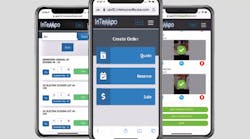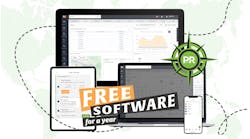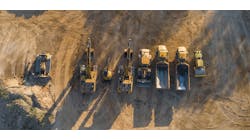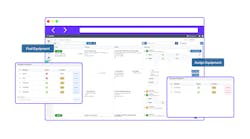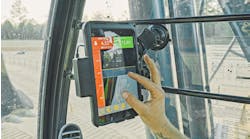Matt Hopp, general manager, InTempo Software, talks with RER about custom reports, integration capability, non-traditional payment methods, and more.
RER: What have been the most important new developments in your software in recent times?
Hopp: Giving our customers better access to their data through Reporter has been a big improvement. We’ve always offered a standard reports package, but we’ve recently introduced a number of custom reports that give customers new ways to analyze and act on their data.
Our integration capabilities have been another major focus. We know that an ERP is just one piece of the puzzle. We want it to be as easy as possible to connect InTempo to other systems, such as telematics platforms and customer relationship management (CRM) systems. We’ve developed an integration architecture that makes it much faster – and easier – to get all of these systems working together. This keeps everyone on the same page with more visibility into the end-to-end rental cycle.
What are likely to be the most important new developments in your software in the foreseeable future?
We’re continuing to develop new options for our Curbstone payments module. As digital payments become more popular, we’re working to provide seamless ways to accept newer, non-traditional payment methods. We’re also continuing to account for new changes in security and compliance, making it easier for our customers to protect their payment data without dedicating a full team to the task.
We’re also developing additional API REST services to push data in and out of the system. That goes hand-in-hand with the integrations initiative. Our goal is to make it as easy as possible for InTempo users to connect their ERP with any of the solutions they add to their tech stack as they grow, whether that’s a new point solution they’re testing out at a single branch or an enterprise software platform that their entire organization uses at the corporate level.
The past couple of years we heard a lot about rental companies adopting e-commerce as a far more important part of their business and software manufacturers offering more capabilities. Enhanced customer portals have been a big part of it as well. Now that people are returning back to more “normal” lifestyles and work methods, are e-commerce and enhanced customer portals continuing to be just as popular?
E-commerce and customer portals are key pieces of a seamless customer experience. Even as we return to a more “normal” environment, speed and convenience are now the standard. Customers expect to get what they need, when they need it. Waiting on hold, sending multiple messages to Customer Service, and making constant visits to the rental yard no longer work for their busy schedules. We’ve seen demand for both e-commerce and self-serve customer portals continue to rise, with no signs of slowing down.
Rental companies are now receiving a lot of data through telematics communications. How is your software helping rental companies to process and most effectively utilize this information?
We offer the tools for our customers to integrate with any telematics solution. That way, they can access all their data, from machine hours and GPS location to engine light information and faults, within their rental software. They get a “single source of truth” for all that information; no more scrambling from one platform to another to find what they’re looking for.
Meanwhile, our Reporter application helps customers turn those data points into actionable insights. Customers no longer have to manually collect their telematics information and figure out what to do with it. They tell us what they want to use their data for, and we help them create the dashboards and charts that support those efforts.
How does your software help sales staff and service personnel on the road?
For years, our customers have relied on our mobile application for delivery signatures, condition reports, damage photos, and other on-the-go processes. We continue to enhance that application, having recently added new API functionality to feed data into our customers’ sales applications, such as Salesforce.
What are some of your long-range thoughts about where software is going a few years down the road?
As everything becomes more interconnected, we expect to see more integrations with other software packages. Customers are looking for ways consolidate all of their operations, from equipment tracking and service to banking and sales. That’s why we’re investing so heavily in our integration capabilities; as our customers grow, we’re here to make sure they have easy ways to get the job done.
